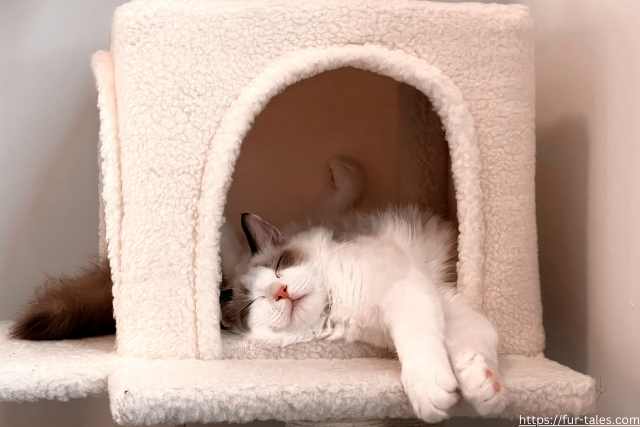
Tight Corners & Cozy Cubes: Why Cats Love Sleeping in Small Spaces
If you’ve ever found your cat curled up in a shoebox, inside a laundry basket, or wedged between sofa cushions, you’re not alone. One of the most adorable feline behaviors is their love for sleeping in small, enclosed spaces. But what’s the science—and instinct—behind this snug preference?
Let’s explore why cats are drawn to compact spots for napping and how it connects to their natural instincts, comfort, and health.
1. Instinct for Safety and Survival
In the wild, cats are both predators and prey. Small spaces offer:
- Protection from potential threats
- A better vantage point to watch their surroundings
- Low visibility, so they can rest without being seen
Even domesticated house cats carry this instinctual behavior. That cardboard box in your living room? It mimics a safe, enclosed den.
2. Temperature Regulation
Cats love warmth. Their ideal ambient temperature is between 85°F and 100°F (29°C–38°C)—much higher than most humans prefer.
Small spaces help trap heat, turning cozy corners into mini saunas. It’s why cats love:
- Sunny window ledges
- Tight blankets
- Laptop keyboards (guilty!)
3. Stress Relief & Anxiety Reduction
Studies show that providing hiding spots—like boxes or covered beds—can significantly reduce a cat’s stress levels, especially in unfamiliar environments (like shelters or new homes).
Enclosed sleeping spaces help cats:
- Feel in control
- Avoid overstimulation
- Lower cortisol (stress hormone) levels
In fact, many veterinarians recommend giving anxious cats access to enclosed hideouts.
4. Curiosity + Comfort = Perfect Nap Spot
Cats are famously curious. A new bag, drawer, or nook becomes a mystery to solve—and if it’s comfy, they’ll claim it as a sleeping zone.
Plus, cats sleep 12–16 hours a day, often switching spots. So, they naturally gravitate toward quiet, cushioned, and confined areas where they can snooze undisturbed.
5. Boxes, Baskets & Blankets: Cat-Tested Favorites
Here are a few places cats love to sleep:
- Cardboard boxes: Provide warmth, walls, and fun
- Closets or drawers: Dark and undisturbed
- Suitcases or laundry baskets: Soft and smell like you
- Cat caves or hooded beds: Purpose-built for feline snugglers
Want to treat your cat? Try rotating different boxes or hideouts to keep things interesting!
How to Create Safe Small Spaces for Your Cat
- Use non-toxic materials (no treated cardboard or plastic fumes)
- Ensure airflow and no risk of being trapped
- Avoid locations near hot appliances or cords
- Place spaces in quiet areas away from heavy foot traffic
Image Designed Using Canva
